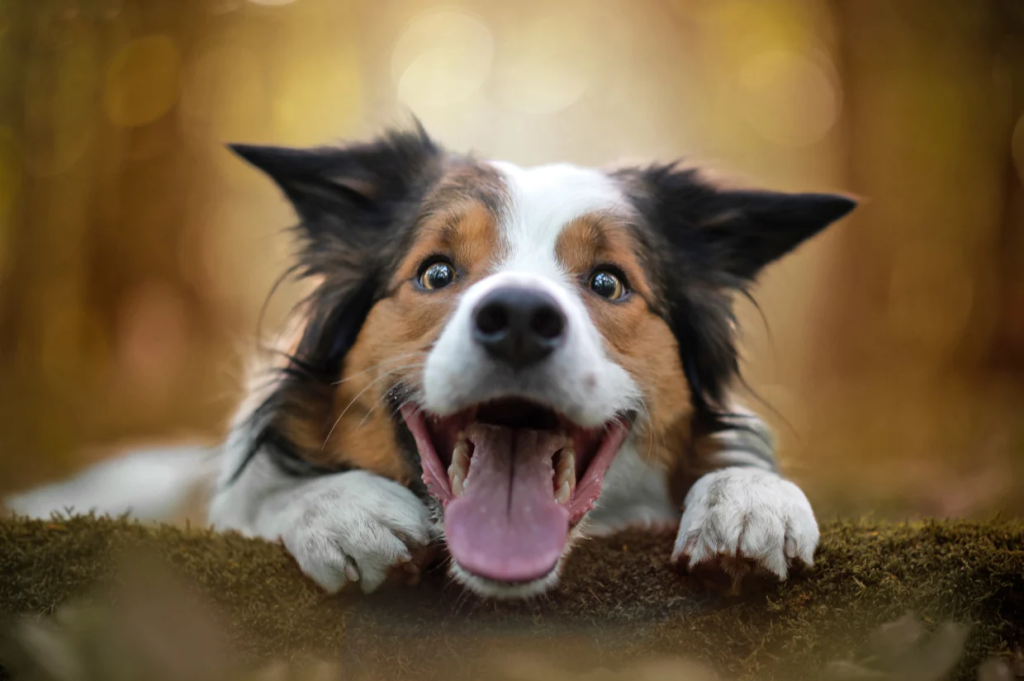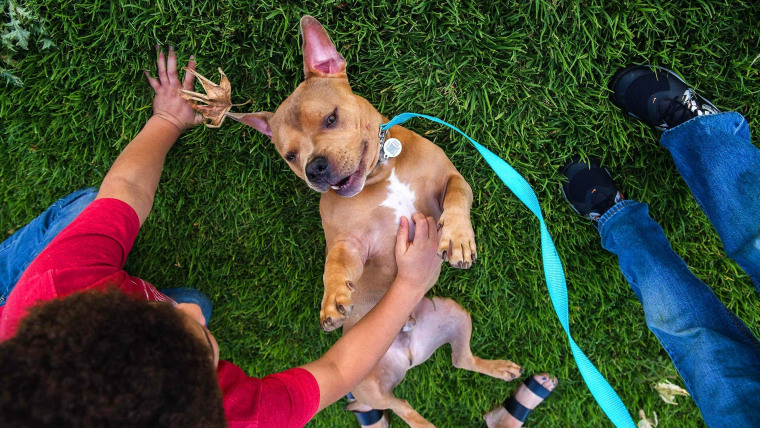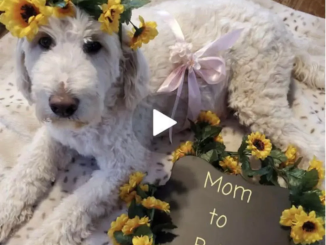Canine eggheads enjoy playing with toys and retrieving objects.

“Gifted” dogs, who have a rare talent for learning lots of words for objects easily, also turn out to be more playful than other dogs, a new study finds.
Prior research in humans has shown a link between playfulness and problem-solving abilities, so animal behavior researchers from Eötvös Loránd University in Budapest, Hungary, wondered if the same was true for rollicking pups.
What is a gifted dog? In the new study, it was Border collies who had proven in prior research that they were able to learn as many as 12 new words per week and then retain them for months.
To take a closer look at the possible association between giftedness and playfulness in dogs, Claudia Fugazza, a researcher in the university’s department of ethology (the study of animal behavior), and her colleagues asked the owners of 165 Border collies to fill out dog personality questionnaires. Twenty-one of the dogs were gifted and the other 114 were just randomly selected with no testing for word learning ability.
The surveys assessed the personality of the animals in five categories:
- Fearfulness, including fear of people, nonsocial fear, fear of dogs, fear of handling.
- Aggression toward people, including general aggression and aggression in certain situations.
- Activity/Excitability, including excitability, playfulness, active engagement and companionability.
- Responsiveness, such as trainability and controllability.
- Aggression toward animals, including aggression toward dogs, prey drive and dominance over other dogs.
For the evaluation of playfulness the owners were asked to rate their dogs in three areas:
- Dog gets bored in play quickly.
- Dog enjoys playing with toys.
- Dog retrieves objects, such as balls, toys and sticks.
The researchers focused solely on Border collies because earlier experiments found that the breed is more likely to be good at learning new words compared to others.
After collecting the survey responses, the researchers then compared the responses from owners of gifted dogs to those from the owners of dogs who had not been identified as gifted.
Playfulness was the only personality trait that was consistently different between the two groups.
It’s not clear from the study whether it’s the playfulness that helps the dogs learn more words, or whether the extra playful ones ended up with more opportunities to learn, said Fugazza, the study’s lead author, said in an email. That’s because gifted dogs tend to learn words for objects when their owners are playing with them.
Are playful dogs smarter?
Not exactly.
“Intelligence is the result of diverse cognitive traits that allow individuals to flexibly solve different types of problems,” Fugazza explained. “Giftedness refers to an extremely good capacity in the case of a specific skill.”
So, maybe gifted dogs are like people who score high on the verbal part of the SATs.
If your pup doesn’t learn words easily, it doesn’t mean it’s a dumb dog. Adam Boyko, an expert in canine genomics, reassures owners that canine intelligence is more than that.
“Both dogs and wolves are playful when they are puppies, but dogs really evolved to living in the human environment and to responding to social cues,” said Boyko, a specialist in the genetics of behavior and an associate professor at the Cornell University College of Veterinary Medicine. “It’s not surprising that the more playful ones exhibit better learning in the domain of learning human words. And it’s not surprising that Border collies, who are bred to respond to human cues, show the propensity to learn words more than other breeds.”

Other breeds of dogs might show intelligence in other ways, Boyko said. For example, wolves are very intelligent although they don’t typically pick up on human cues.
“But they can figure out how to escape,” said Boyko. “Where dogs would look for a person to help, wolves would see how humans did a latch and lock and then the wolves would do it themselves to get out.”
Boyko would like to take the study a step further and look at the genetics of the gifted dogs.
“This is a tantalizing correlation that might be meaningful if you are trying to build better service dogs,” he said.
One thing that can’t be determined from the study is whether the playfulness trait spurred owners to interact more with their dogs and thus teach them more words, said Dr. Nicholas Dodman, a professor emeritus at the Cummings School of Veterinary Medicine at Tufts University, CEO and president of the Center for Canine Behavior Studies and the author of “Pets on the Couch: Neurotic Dogs, Compulsive Cats, Anxious Birds and the New Science of Animal Psychiatry.”
Dodman said the study is interesting but needs to be replicated in a larger number of dogs.
“I would also like to see it done in a different breed,” he said.
The new findings might help people who want to buy or adopt a puppy. It suggests that playfulness might be a good attribute to consider.
“The playful ones might be more likely to interact with a person, assimilate words more easily and be more intelligent,” said Dodman.
“15 Years Later: A Heartwarming Moment as a Dog Celebrates its First Birthday with a Cake and a Tear of Joy”

The aging dog had been a loyal companion to its owner for 15 years and a significant part of their life. The owner wanted to show gratitude for the dog’s unwavering companionship and decided to throw it a memorable birthday party. The party preparations were filled with anticipation and thrill, as the owner carefully selected decorations such as colorful balloons and streamers to create a joyful ambiance. A large banner flaunted on the wall, proudly announcing “Happy Birthday to our beloved companion!”

With a wildly wagging tail, the dog watched in pure joy and excitement as the celebration in honor of its existence unfolded. It was beyond thrilled that its owner had invited close friends and relatives who had witnessed its unwavering loyalty and attachment to its human over the years.

The scent of delicious snacks wafted through the air, tempting both the guests and the furry friend in attendance. The host had gone above and beyond to offer an array of tasty treats that catered to both human and canine taste buds. Plates were piled high with mouth-watering food, and a one-of-a-kind dog cake stole the show, complete with crunchy biscuits and a single candle.
As the time came to cut the cake, cheers and well-wishes filled the room. Surrounded by loved ones, the dog soaked up the warmth of the attention showered upon it. With a gentle paw, the pup even helped guide the knife, playing an active role in this special moment. The cake was divided and enjoyed, a thoughtful gesture symbolizing the bond between the dog and its human companions.

Throughout the day, the pooch relished the love and affection lavished upon it. It was treated to affectionate cuddles, indulgent tummy rubs, and heartfelt expressions of gratitude. The dog was filled with a deep sense of satisfaction, aware that its mere presence had made a difference in the lives of those around it, just as they had left an indelible mark on its own being.

The festivities carried on throughout the night, with fun and entertaining activities that brought smiles and happiness to all those in attendance. Despite being older and moving at a slower pace, the dog fully immersed itself in the festivities, cherishing every moment with pure joy. It seemed as though all of its troubles and worries had vanished, replaced with an overwhelming feeling of contentment and belonging.
As the party drew to a close, the dog cozied up next to its owner’s feet, overwhelmed with a profound sense of pleasure and adoration. Tears of happiness sparkled in its eyes, a testament to the depth of its emotions. This was a moment 15 years in the making, a celebration of its very existence, and one that would forever be etched in its memory.

In the end, it turned out to be more than just a regular birthday celebration. It was an occasion to commemorate the unwavering love that a dog has for its owner. It was a tribute to the enduring affection, loyalty, and happiness that a beloved pet brings into our lives. Moreover, it served as a gentle reminder to the elderly dog that it was still valued and that its journey had been exceptional.
As the night drew in, the dog drifted off to sleep, wrapped in a cocoon of love and gratitude. In its slumber, it relived the day’s events, the laughter, and the shared moments of joy. A smile crept onto its snout as it realized that it had borne witness to a remarkable milestone: a birthday bash that celebrated a lifetime of cherished memories.
Don’t forget to SHARE this heartwarming tale with those you hold dear.



Leave a Reply